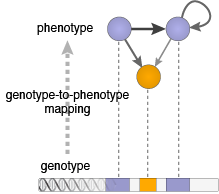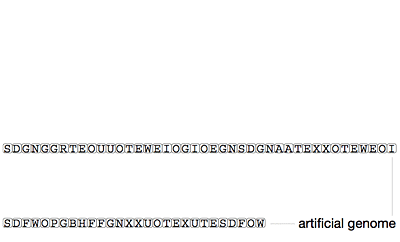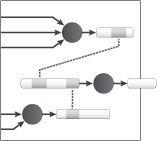Analog Genetic Encoding (AGE)Evolutionary Synthesis and Reverse Engineering of Complex Analog NetworksClaudio Mattiussi, Daniel Marbach, Peter Dürr, Thomas Schaffter, Dario FloreanoThe synthesis and reverse engineering of analog networks (see sidebar) are recognized as knowledge-intensive activities, where few systematic techniques exist. Given the importance and pervasiveness of analog networks, there is a founded interest in the development of automatic techniques capable of handling both problems. Evolutionary methods appear as one of the most promising approaches for the fulfillment of this objective. Analog Genetic Encoding (AGE) is a new way to represent and evolve analog networks. The genetic representation of Analog Genetic Encoding is inspired by the working of biological genetic regulatory networks (GRNs). Like genetic regulatory networks, Analog Genetic Encoding uses an implicit representation of the interaction between the devices that form the network. This results in a genome that is compact and very tolerant of genome reorganizations, thus permitting the application of genetic operators that go beyond the simple operators of mutation and crossover that are typically used in genetic algorithms. In particular, Analog Genetic Encoding permits the application of operators of duplication, deletion, and transpositions of fragments of genome, which are recognized as fundamental for the evolution and complexification of biological organisms. The resulting evolutionary system displays state-of-the-art performance in the evolutionary synthesis and reverse engineering of analog networks. The AGE GenomeThe AGE genome is constituted by one or more strings of characters (called chromosomes) from a finite genetic alphabet. The experimenter defines a device set which specifies the kind of devices that can appear in the network. For example, the device set of an evolutionary experiment aimed at the synthesis of an analog electronic circuit could contain a few types of transistors, and the device set of an evolutionary experiment aimed at the synthesis of a neural network could contain a few types of artificial neuron models. The experimenter specifies also the number of terminals of each kind of device. For example, a bipolar transistor has three terminals, a capacitor has two terminals, and an artificial neuron could be specified as having one output terminal and one input terminal. The AGE genome contains one gene for each device that will appear in the network decoded from the genome, as shown in the figure
Decoding the AGE GenomeAnalog Genetic Encoding specifies the regions of the genome which correspond to the devices and to their terminals and parameters by means of a collection of specific sequences of characters that we call tokens. One specific device token is defined by the experimenter for each element of the device set. The device token signals the start of a fragment of genome that encodes an instance of the corresponding device. The experimenter defines also a terminal token, which delimits the sequences of characters that are associated with the terminals. The interaction between genes is represented in terms of a device interaction map I, which transforms pairs of character sequences associated with two distinct device terminals, into a numeric value that characterizes the link connecting the two terminals. The final result is an analog network decoded from the genome, as shown in the animation
Journal Papers
Conference Papers
Patent / Thesis
|
|



